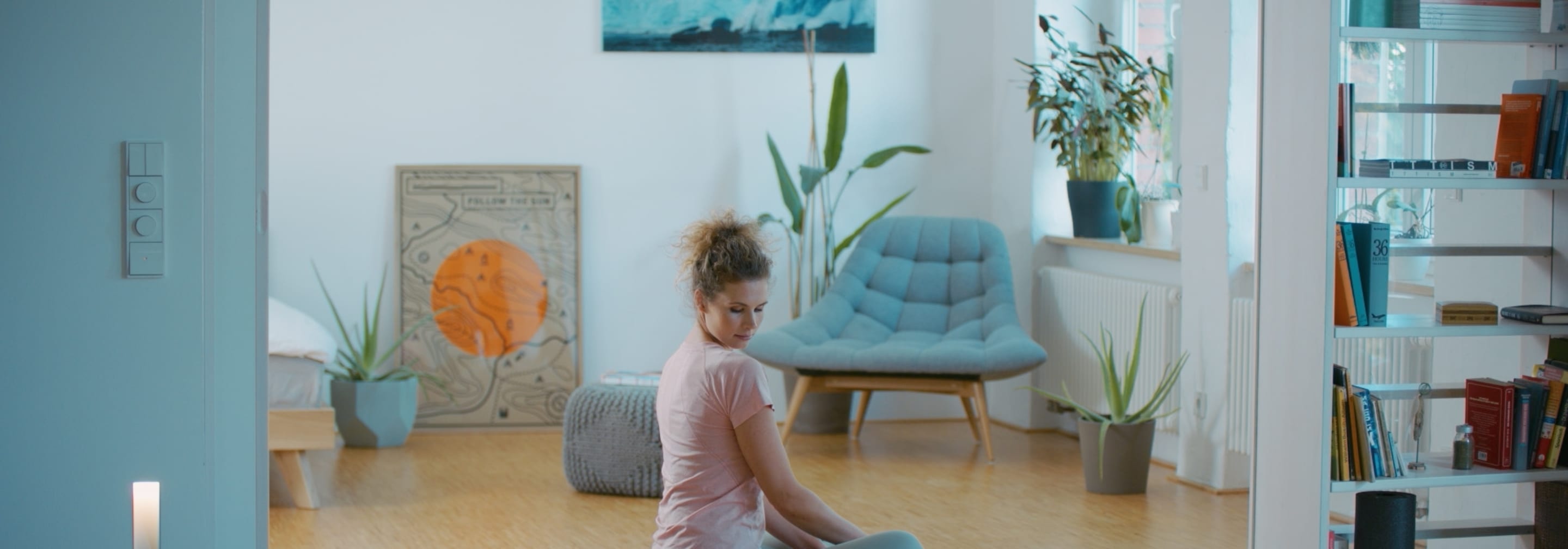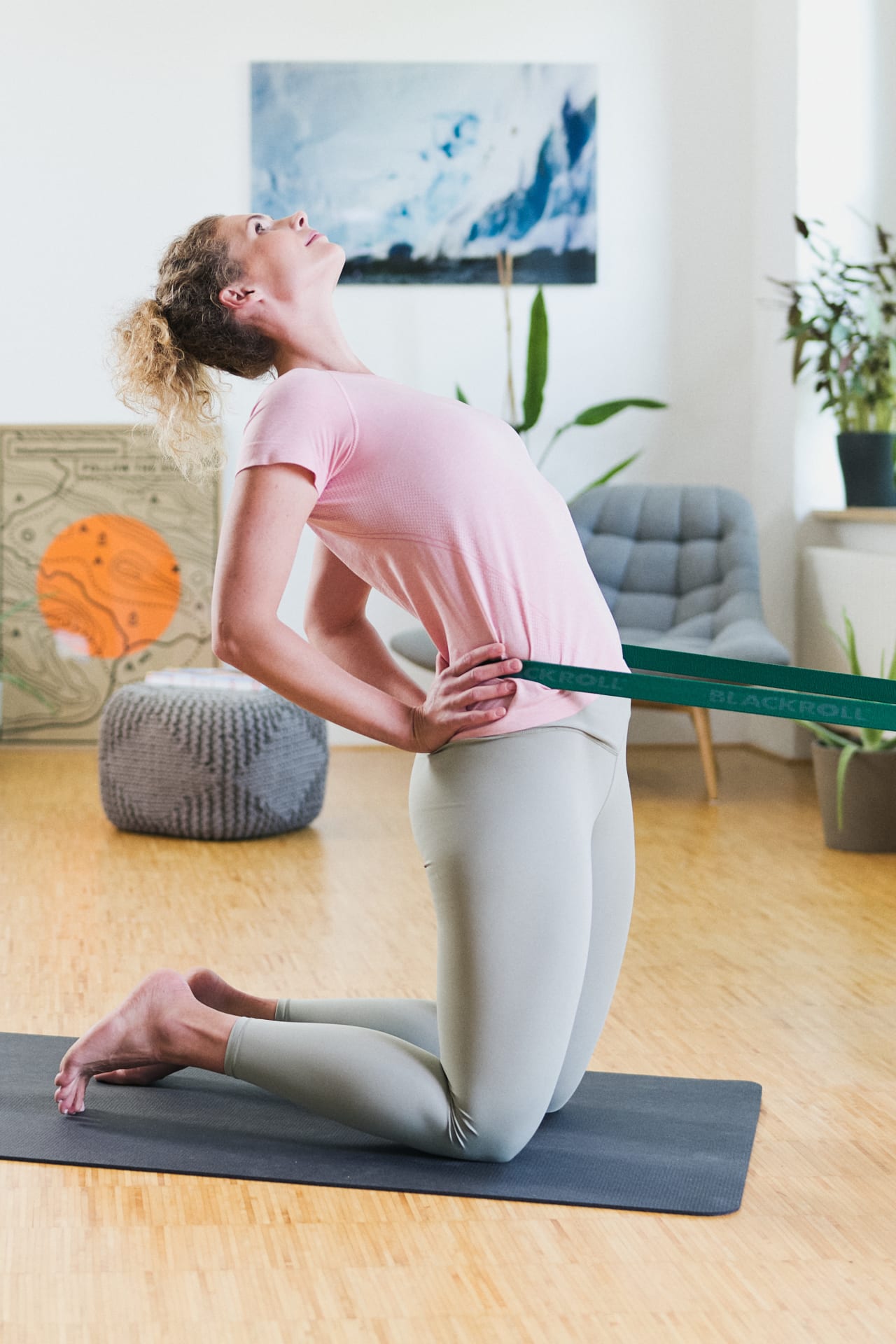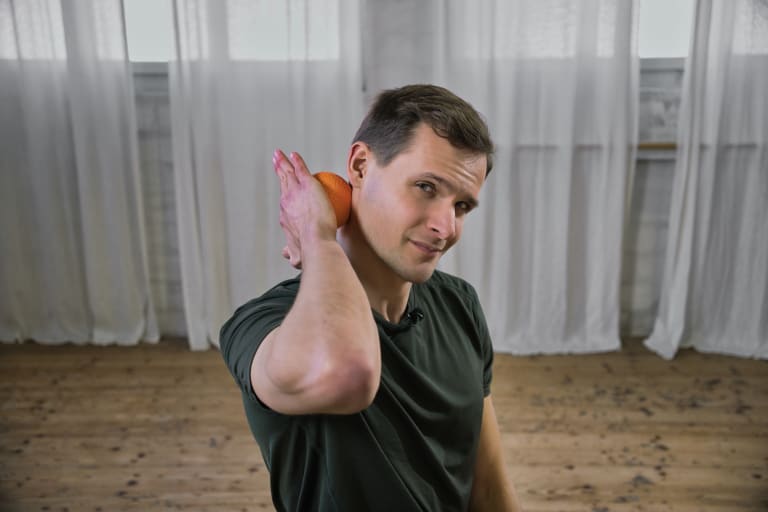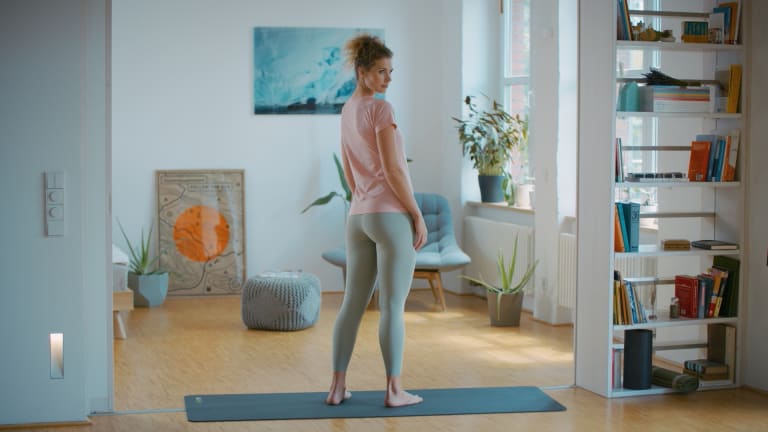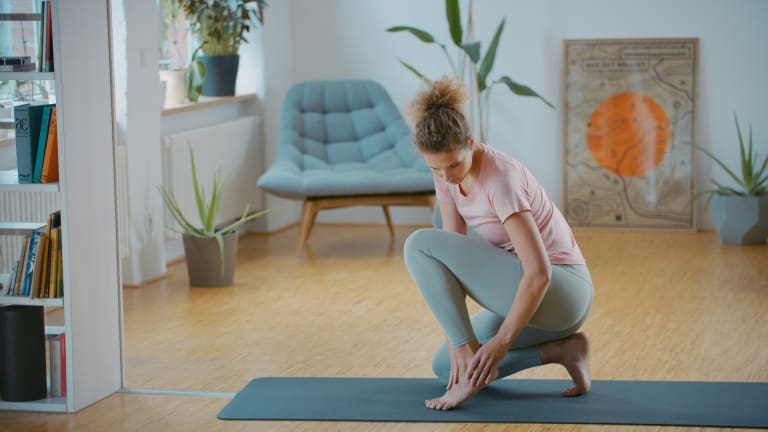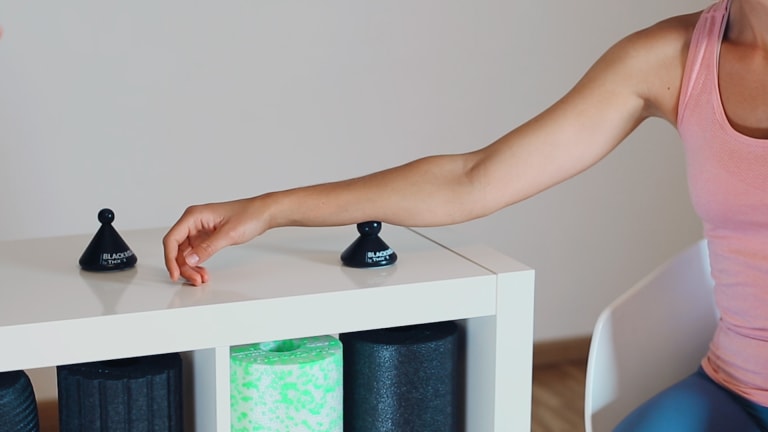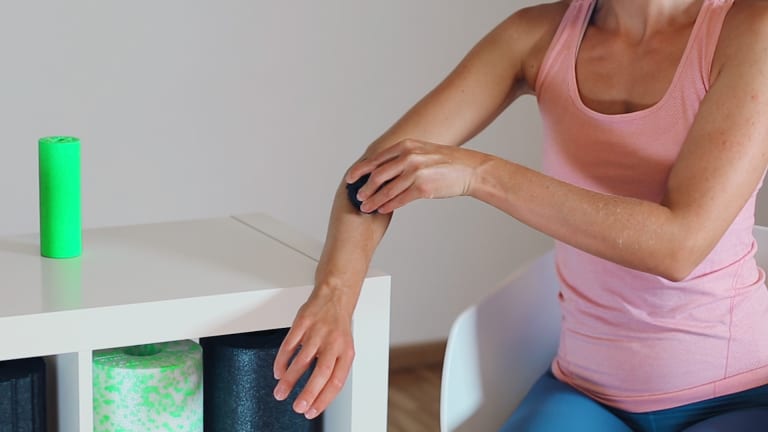
Herniated disc exercises
Here, we show you how to relive a herniated disc in your lumbar spine.
These exercises for a herniated disc aim to balance out tension around your spine. They offer help in a combination of myofascial self-massages and targeted stretching and strengthening exercises. And the best part? You won’t need much equipment, and there’s no need to go to the gym. You can easily do the exercises at home by your sofa.
Your herniated disc exercise program:
- Myofascial self-massage
- Triggering deep stress points
- Mobilization and stretching exercises
- Exercises for activation and strengthening
2-3 times a week
Perform the herniated disc exercises two to three times a week.
Get well soon!
As a general rule, take it slowly with trying out the exercises. If you experience severe pain during the exercises, you should skip them. And only start doing them when the pain from your herniated disc is no longer acute.
Myofascial massage for a herniated disc
Phase one: if you have a herniated disc, work on the most involved parts of your body using myofascial release techniques. This releases tension from the tissue and can reduce your pain. Don’t be surprised that you’ll be working from the front to begin with. This is important in order to reduce any tension from the shortened muscles and fascia at the front of your body caused by everyday life.

Fascia training for a herniated disc: releases tight hip flexors
Lie down on your stomach. Your arms should be positioned in front of your body, with your palms facing down; rest your head loosely on the backs of your hands.
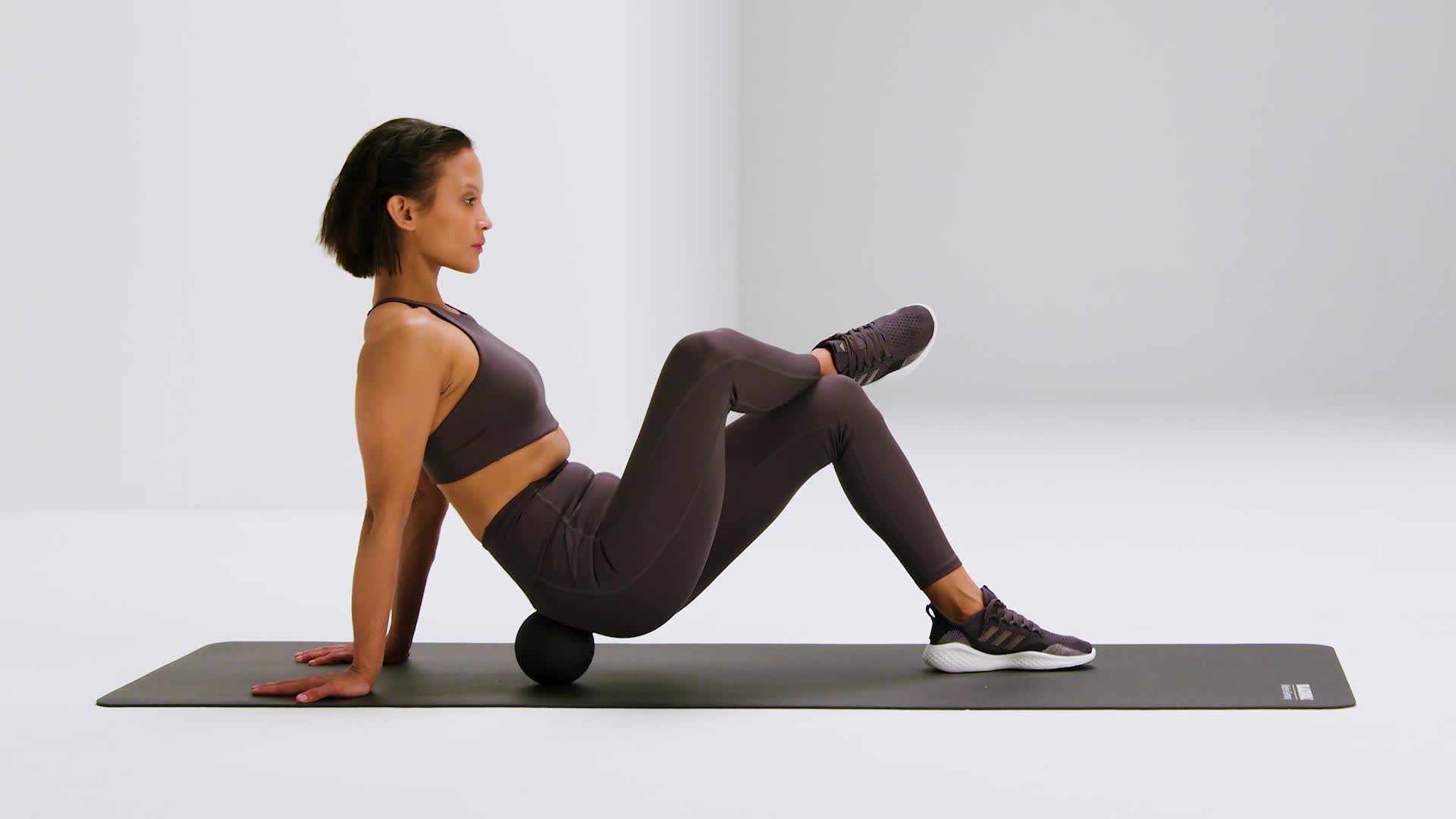
Fascia training for a herniated disc: relaxes your glutes
Place the BALL 12 on the floor and sit on it with one side of your buttocks. Place the leg on the side to be treated on top of the other leg’s thigh. Move slowly on the spot and notice any specific tender points.
Releasing deep muscle tension associated with a herniated disc
After your myofascial self-massage, use the BLACKROLL® TRIGGER TMX® to push into your deep fascial adhesions. The targeted pressure helps relieve tension deep in your glutes.
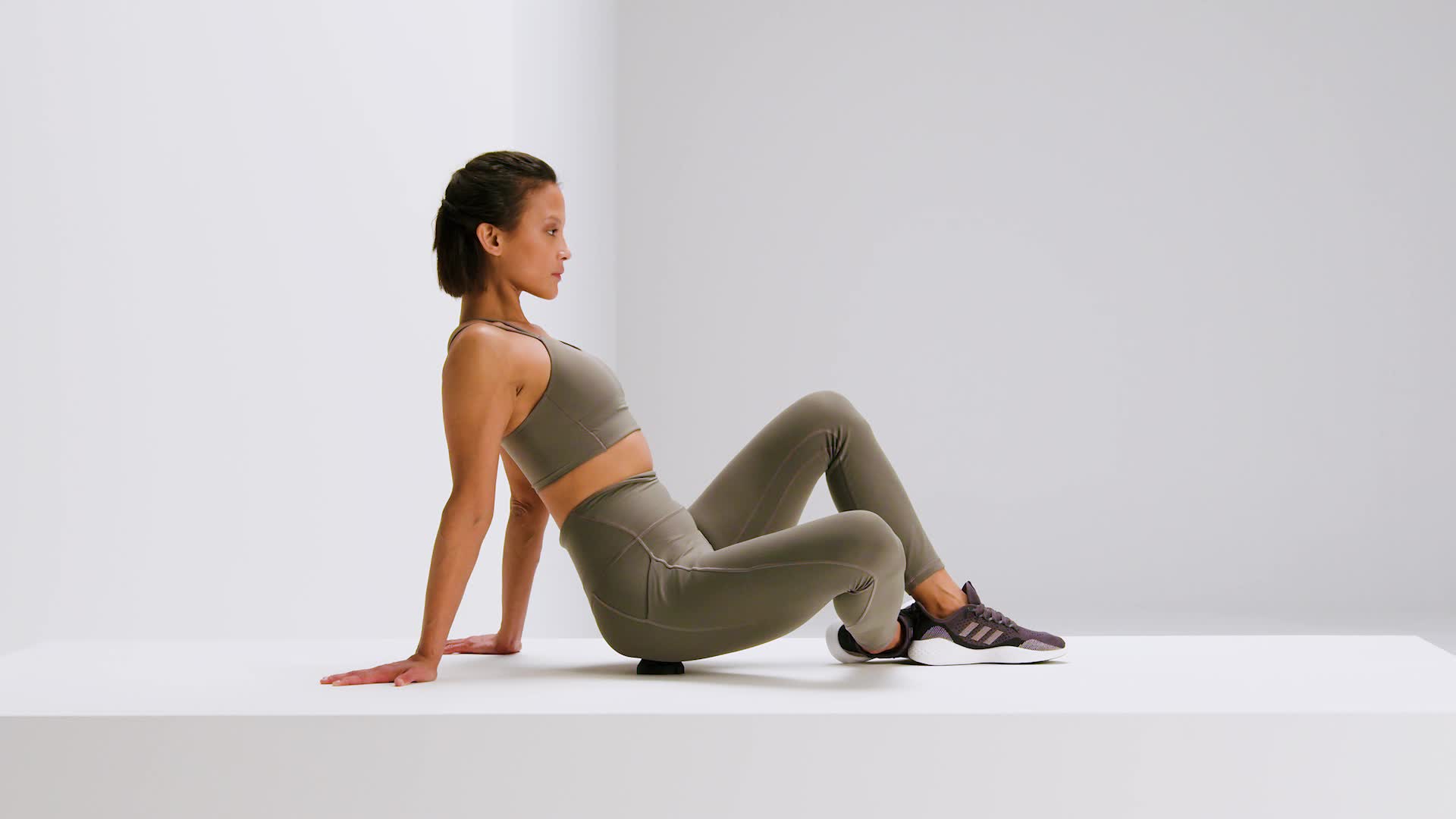
Herniated disc trigger exercise: relieves tight glutes
Lying or sitting down, position the BLACKROLL® TRIGGER TMX® onto the painful spot in your glutes and let yourself sink slowly down onto it.
Mobilization and stretching exercises for a herniated disc
The following exercises for a herniated disc – stretching shortened fascia and muscles – will help you to reduce pulling forces acting on your lumbar spine. You’ll even out imbalances and reduce back pain in your lumbar spine.
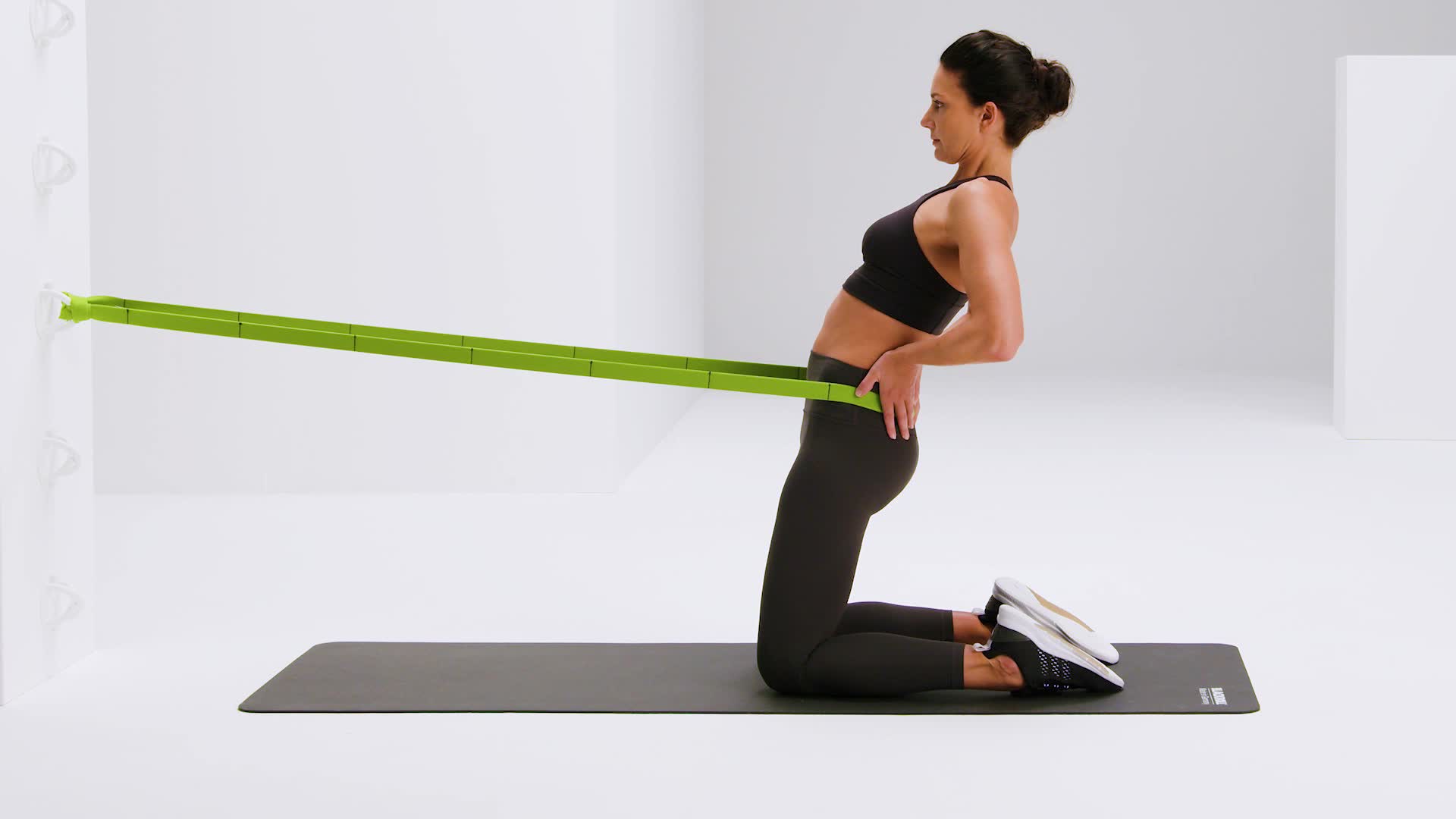
Herniated disc trigger exercise: relieves tight glutes
Start on your knees. Lay the SUPER BAND or MULTI BAND around the back of your hips. Stand on the tip of your toes and draw your chin back toward your spine. Stretch your hips forward and slowly lower your body backward.

Mobilization and stretching exercises for a herniated disc
Start on all fours and place the SUPER BAND around the inside of your upper thigh. Place the band close to your hips. Bring one leg in front of your body and bend your knee to between 45° and 90° – whichever feels possible for you.
Activation and strengthening exercises for a herniated disc
Last but not least, you should strengthen your core muscles to prevent another herniated disc. Important to know: you should only do the strength exercises after you’ve first done self-myofascial techniques (SMT) and mobilization/stretching exercises. That way, you will already have achieved a noticeable improvement in your tight back muscles and be able to prevent relapses. The following exercises for a herniated disc help strengthen the muscles around your spine. Imagine these muscles like a natural corset stabilizing your spine.
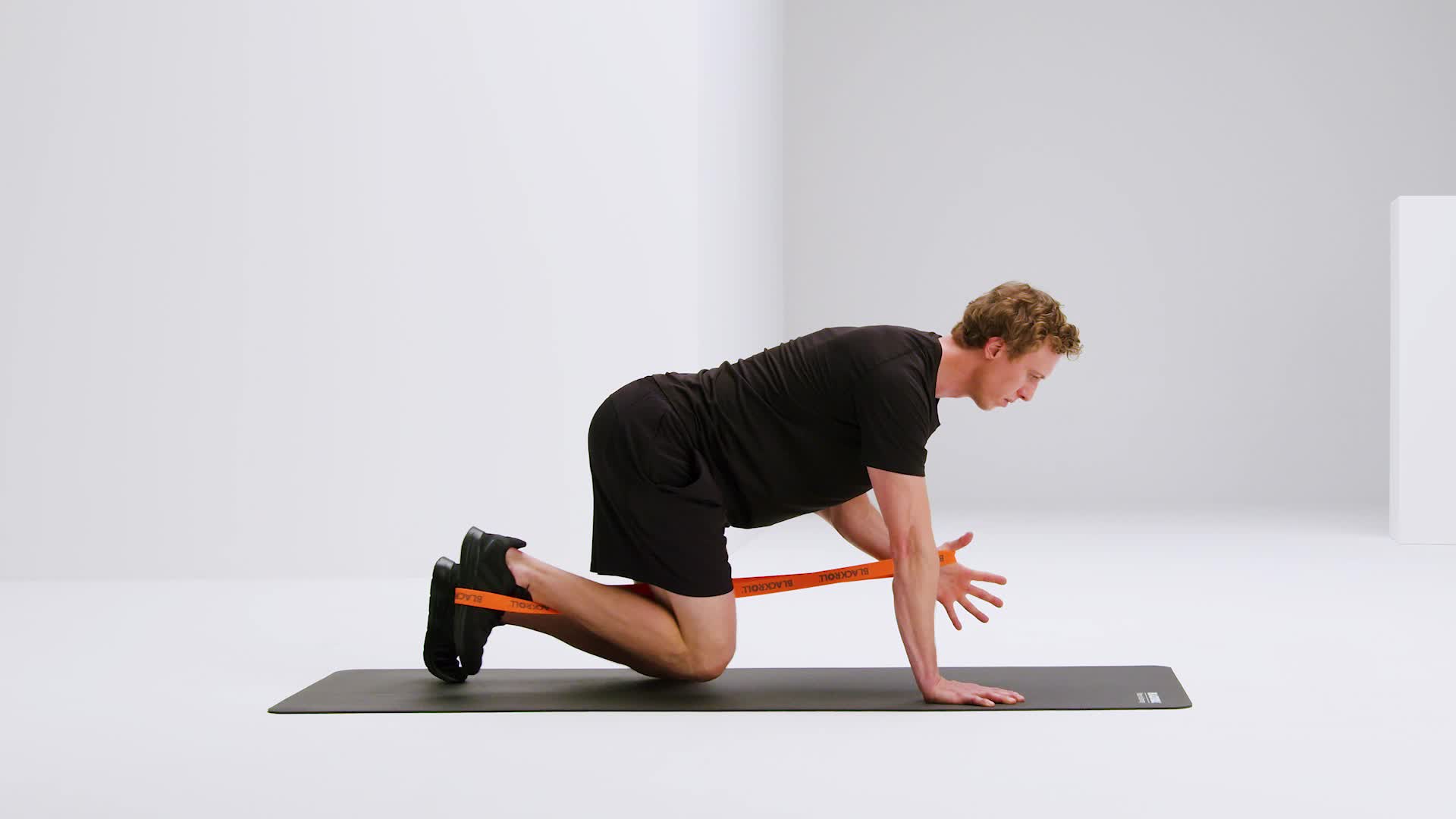
Herniated disc exercise: promotes a neutral spine
Place the SUPER BAND around one foot and hold the other end with the opposite hand. Get down on all fours and place your knee below your hip, and your hand below your shoulder.


